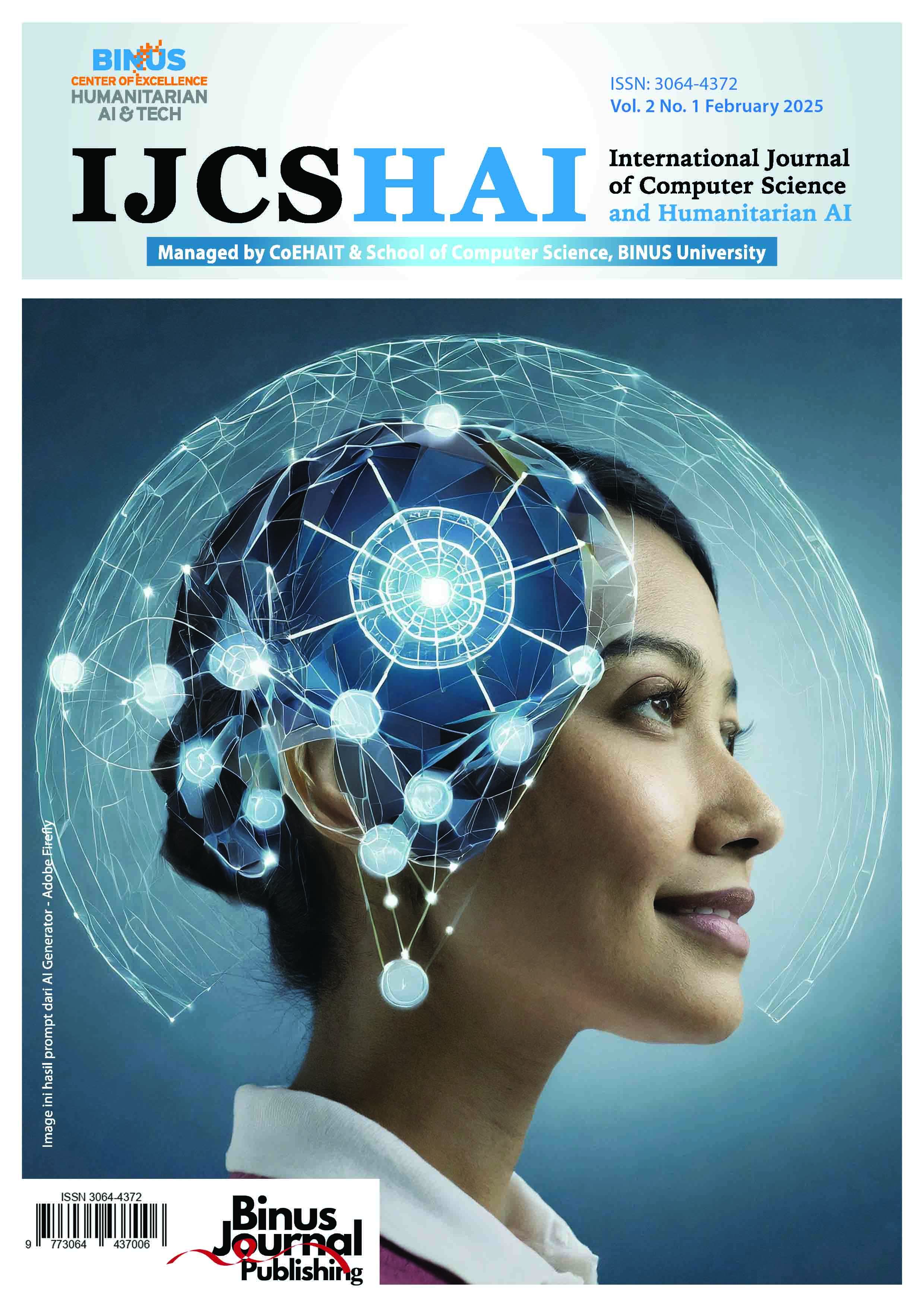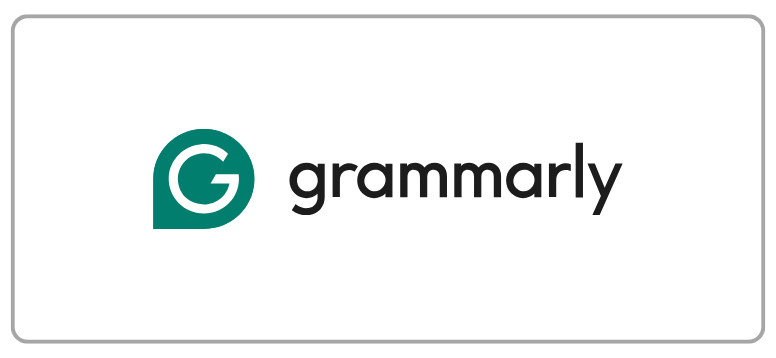Two-Dimensional Segmentation to Reconstruct Three-Dimensional Covid-19 Patient’s Lung CT Using Active Contour
DOI:
https://doi.org/10.21512/ijcshai.v2i1.12417Keywords:
3D Visualization, Active Contour, Marching Cubes, Binary Thresholding, COVID-19Abstract
Beginning in December 2019, SArS-CoV-2, also referred to as COVID-19, quickly spread over the world. With two recurrent waves and a 3.3% fatality rate, COVID-19 has caused over 4 million cases in Indonesia. RT-PCR, antigen, and RT-LAMP are currently the main techniques for COVID-19 detection and diagnosis. A CT scan is usually used for additional diagnosis when RT-PCR results are uncertain, but extra confirmation is required. The need to inform patients about the effects of COVID-19 on the lungs is increasing as the number of cases of the virus keeps rising and diagnosis and first aid techniques advance. The severity of COVID-19-induced pneumonia, which shows up as ground-glass opacities (GGO), which are gray patches in the lung cavity, may be seen on a single-slice CT scan. The degree of lung injury can be measured using image processing techniques. In this study, two- and three-dimensional representations of the lungs were created utilizing a multi-slice CT scan and image processing techniques like active contour and marching cubes. The suggested approach produced an average volume difference of 5% and an accuracy of 62% based on intersection over union (IoU).
References
R. Dhama, S. Khan, R. Tiwari, et al., “Coronavirus disease 2019–COVID-19,†Clin. Microbiol. Rev., vol. 33, no. 4, pp. e00028-20, Jun. 2020, doi: 10.1128/CMR.00028-20.
S. Chaplin, “COVID-19: a brief history and treatments in development,†Prescriber, vol. 31, pp. 23–28, 2020, doi: 10.1002/psb.1843.
"Coronavirus Cases," [Online]. Available: https://www.worldometers.info/coronavirus/country/indonesia/. [Accessed: Sep. 27, 2021].
E. Dong, H. Du, and L. Gardner, “An interactive web-based dashboard to track COVID-19 in real time,†The Lancet Infect. Dis., vol. 20, no. 5, pp. 533–534, 2020.
"Coronavirus," [Online]. Available: https://www.who.int/health-topics/coronavirus#tab=tab_3. [Accessed: Dec. 14, 2021].
D. Jarrom, L. Elston, J. Washington, et al., “Effectiveness of tests to detect the presence of SARS-CoV-2 virus, and antibodies to SARS-CoV-2, to inform COVID-19 diagnosis: a rapid systematic review,†BMJ Evid.-Based Med., vol. 27, pp. 33–45, 2022.
P. Zhai, Y. Ding, X. Wu, J. Long, Y. Zhong, and Y. Li, “The epidemiology, diagnosis and treatment of COVID-19,†Int. J. Antimicrob. Agents, vol. 55, no. 5, 2020.
S. Salehi, A. Abedi, S. Balakrishnan, and A. Gholamrezanezhad, “Coronavirus disease 2019 (COVID-19): A systematic review of imaging findings in 919 patients,†Am. J. Roentgenol., vol. 215, no. 1, pp. 87–93, 2020.
Z. Hughes, “Medical imaging types and modalities,†[Online]. Available: https://www.ausmed.com/cpd/articles/medical-imaging-types-and-modalities. [Accessed: Dec. 14, 2021].
T. C. Kwee and R. M. Kwee, “Chest CT in COVID-19: What the radiologist needs to know,†Radiographics, vol. 40, no. 7, pp. 1848–1865, 2020.
N. Sharma and L. M. Aggarwal, “Automated medical image segmentation techniques,†J. Med. Phys., vol. 35, no. 1, p. 3, 2010.
"What is 3D Image Segmentation and How Does It Work?," [Online]. Available: https://www.synopsys.com/glossary/what-is-3d-image-segmentation.html. [Accessed: Dec. 14, 2021].
T. C. Kwee and R. M. Kwee, “Chest CT in COVID-19: What the radiologist needs to know,†Radiographics, vol. 40, no. 7, pp. 1848–1865, 2020.
S. Widodo and Wijayanto, “Lung field segmentation on computed tomography,†Kursor J., pp. 99–108, 2013.
S. A. Gombe, “3D visualization and segmentation of lungs using ITK/VTK/Qt framework,†Master’s Thesis, Tallinn Univ. Technol. Sch. Inf. Technol., 2017.
S. M. Mostafavi, “COVID19-CT-Dataset: An open-access chest CT image repository of 1000+ patients with confirmed COVID-19 diagnosis,†Harvard Dataverse, V1, 2021, doi: 10.7910/DVN/6ACUZJ.
K. Firdausy, T. Sutikno, and E. Prasetyo, “Image enhancement using contrast stretching on RGB and IHS digital image,†TELKOMNIKA (Telecommun. Comput. Electron. Control.), vol. 5, p. 45, 2007, doi: 10.12928/telkomnika.v5i1.1335.
T. Chan and L. Vese, “An active contour model without edges,†in Scale-Space Theories in Computer Vision, M. Nielsen, P. Johansen, O. F. Olsen, and J. Weickert, Eds. Berlin, Heidelberg: Springer, 1999, vol. 1682, pp. 141–151, doi: 10.1007/3-540-48236-9_13.
P. Getreuer, “Chan-Vese segmentation,†Image Process. On Line, vol. 2, pp. 214–224, 2012.
K. H. Rahouma, S. M. Mabrouk, and M. Aouf, “Lung cancer diagnosis based on Chan-Vese active contour and polynomial neural network,†Procedia Comput. Sci., vol. 194, pp. 22–31, 2021.
K. A. Mandaliana, T. Harsono, and R. Sigit, “3D visualization and reconstruction of lung cancer images using marching cubes algorithm,†in 2019 Int. Electron. Symp. (IES), 2019, pp. 143–147, doi: 10.1109/ELECSYM.2019.8901667.
R. Bumm, A. Lasso, N. Kawel-Böhm, A. Wäckerlin, P. Ludwig, and M. Furrer, “First results of spatial reconstruction and quantification of COVID-19 chest CT infiltrates using lung CT analyzer and 3D slicer,†Br. J. Surg., vol. 108, Suppl. 4, May 2021, doi: 10.1093/bjs/znab202.077.
E. Lanza, R. Muglia, I. Bolengo, et al., “Quantitative chest CT analysis in COVID-19 to predict the need for oxygenation support and intubation,†Eur. Radiol., vol. 30, no. 12, pp. 6770–6778, 2020, doi: 10.1007/s00330-020-07013-2.
K. Li, Y. Fang, W. Li, et al., “CT image visual quantitative evaluation and clinical classification of coronavirus disease (COVID-19),†Eur. Radiol., vol. 30, no. 8, pp. 4407–4416, 2020, doi: 10.1007/s00330-020-06817-6.
C. S. Guan, Z. B. Lv, S. Yan, et al., “Imaging features of coronavirus disease 2019 (COVID-19): Evaluation on thin-section CT,†Acad. Radiol., vol. 27, no. 5, pp. 609–613, 2020, doi: 10.1016/j.acra.2020.03.002.
W. Lu, J. Wei, T. Xu, et al., “Quantitative CT for detecting COVID‑19 pneumonia in suspected cases,†BMC Infect. Dis., vol. 21, no. 836, 2021, doi: 10.1186/s12879-021-06556-z.
Downloads
Published
How to Cite
Issue
Section
License
Copyright (c) 2025 Zaki Ambadar; Tri Arief Sardjono; Nada Fitrieyatul Hikmah

This work is licensed under a Creative Commons Attribution-ShareAlike 4.0 International License.
Authors who publish with this journal agree to the following terms:
- Authors retain copyright and grant the journal right of first publication with the work simultaneously licensed under a Creative Commons Attribution License - Share Alike that allows others to share the work with an acknowledgment of the work's authorship and initial publication in this journal.
- Authors are able to enter into separate, additional contractual arrangements for the non-exclusive distribution of the journal's published version of the work (e.g., post it to an institutional repository or publish it in a book), with an acknowledgment of its initial publication in this journal.
- Authors are permitted and encouraged to post their work online (e.g., in institutional repositories or on their website) prior to and during the submission process, as it can lead to productive exchanges, as well as earlier and greater citation of published work.
USER RIGHTS
All articles published Open Access will be immediately and permanently free for everyone to read and download. We are continuously working with our author communities to select the best choice of license options, currently being defined for this journal as follows: Creative Commons Attribution-Share Alike (CC BY-SA)





